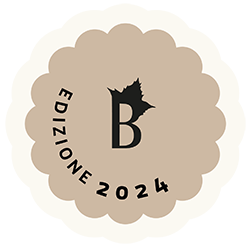The fertile land, rich in springs and sheltered by the mountains has been chosen by man since ancient times. The first evidence of human life was discovered in Sa Itria: the fascinating menhir and Domus de Janas (tombs cut into the rock) were built starting from the Neolithic age.
We don’t have definite information of the origins of the town but we know the first time it appears in written sources: in 1341 the villa di Gavi is listed in the Rationes Decimarum between the towns of the Diocese of Santa Giusta, who paid taxes to the Roman curia.
During the important Judicial age (in the high Middle Ages) Gavoi was included in the Giudicato of Arborea and was part of the parish of Barbagia of Ollolai. The residents enjoyed special privileges and duties as to serve in the Judicial army.
Among the signatories of the peace in 1388 between Eleanora d’Arborea e Giovanni d’Aragona, there was Bernardus Lepore, mayor of Gavoi and attorney of the parish of Barbagia of Ollolai and Austis.
With the signing of the surrender of the Arborea in 1410 the villa became a feud of Cubello who managed to bring peace between the citizens offering to follow and continue the Arborea traditions. In 1463 Salvatore Cubello obtained the title of Marquis therefore Gavoi became part of the Marquis of Oristano.
His territories were increased by the Marquis of Oristano, Leonardo Alagon, with the donation of the territories of Oleri (a villa destroyed by the plague), which were divided between Gavoi and Ovodda.
With the confiscation of the feud following the capture of Alagon, who had dared to rebel against the Crown of Aragon in the name of his descendants with Arborea, the center passed into the hands of the Carroz and in 1614 became part of the Duchy of Mandas.
For approximately two centuries, there was a succession of administrations of several baronial officials. The acquisition of the Island by the House of Savoy did not involve any transformation of the feudal system that was abolished only in 1838.
It became the capital of the district of the province of Nuoro in 1821 with the abolition of the provinces. From 1848 it was inclucted into the administrative division of Cagliari until 1927, when it returned to be part of the new province of Nuoro.
Surrounded by hills and mountains and watered by streams, Gavoi enjoys a strategic location in the center of Sardinia.
The reliefs stand out all around the town - Protected by its strong winds to the north is Monte Pisanu Mele, to the west the mountains of Brundihòne and Chizu de Noli, to the east the mountains of Puddis Cogoddio (North-East), while in the South the view opens up with the lovely valley of the river Taloro.
Forests of Oak and Holm Oak with Chestnut, Holly, Halnut and Cherry are the refuge of many species of animals in which are preserved Sardinian endemic: Sardinian euprotto (amphibious), red kite, peregrine falcon, raven, wild cat, marten.
Many areas are reserved for grazing , but particulary near water courses, there are also grounds for the cultivation of fruit trees and especially vegetables: beans, tomatoes, cabbages, pumpkins and famous potatoes, which have achieved great success through promotional projects and festivals.
At about 2 km south of the town lies Lake Gusana, one of the most important sites of environmental tourism in Barbagia. The artificial lake was built in the early 60s of the twentieth century, as the first jump of the river Taloro for the generation of electricity, and today represents a natural heritage of great interest for its natural beauty and landscape. Around the waters are an intense blue color in winter and green in summer (for algae in suspension). There are typical shrubs of the Mediterranean vegetation (Macchia Mediterranea): arbutus, juniper, broom, heather and cistus. A lot of different sports are played around the lake: hiking, horseback riding and canoeing, also the regional championship of trout fishing. Nearby there are several archaeological sites of Nuragic and Roman times: vintage pictures show a roman bridge that is today under water.
There is no shortage of opportunities for fun and new experiences, from rich archaeological heritage to many cultural events.
For those who want to learn about the beliefs and rituals of the prenuragic age it is advisable to visit the archaeological sites near the church of Sa Itria. Here is the famous menhir Sa Perda Longa that rises from the ground for more than 3 meters, while a group of menhir are still visible in the clearing of Perdas Fittas. In this area are preserved different types of tombs carved in the rock, called domus de Janas, the most visited are those of S'iscrithola, which are dug into individual boulders of granite, showing traces of red ocher in the hall, and the domus of Gurrai, which develop in different rooms and are defined sas campanas de Gurrai for their particular shape.
In the highest parts and near the water sources, a construction site is preserved to symbolize the ancient civilization of Sardinia: the Nuraghe. Among the best known, is Nuraghe Talaichè, about 6 m tall, with the characteristic tholos coverage intact.
Around the village is the rural church of Madonna d'Itria, rebuilt at the beginning of the 900s on an ancient Greek cross system. Here takes place the traditional horse race of medieval origin: Su Palu de Sa Itria.
Walking through the charming streets of the old town you can see the granite houses typical of the barbaricino architecture, very well preserved.
You can let yourself get carried away searching for a glimpse of unexpected view, enriched by fragrant flowered balconies. Continuing along the road, you reach the main square where the space is extended to give a stunning overview of the beautiful parish church dedicated to San Gavino: built in the sixteenth century in late Gothic style, it has a simple façade embellished with an impressive rose window in red vulcanite and a Baroque portal.
To enhance your knowledge on the local culture, you can not miss a visit to the museum house Porcu Satta, which boasts a remarkable ethnographic collection: The beautiful traditional Gavoi costumes, the toys of the past, the tools of ancient crafts and collection of musical instruments. Among these are the su tumbarinu, the drum played by tumbarinos that made Gavoi famous throughout the island.
Among the many cultural events that animate the country this has become a particularly significant literature festival. The “Isola delle Storie”, born in 2004, is a big event which takes place in early July which attracts writers, actors, musicians, journalists, and politicians from all over the world.



